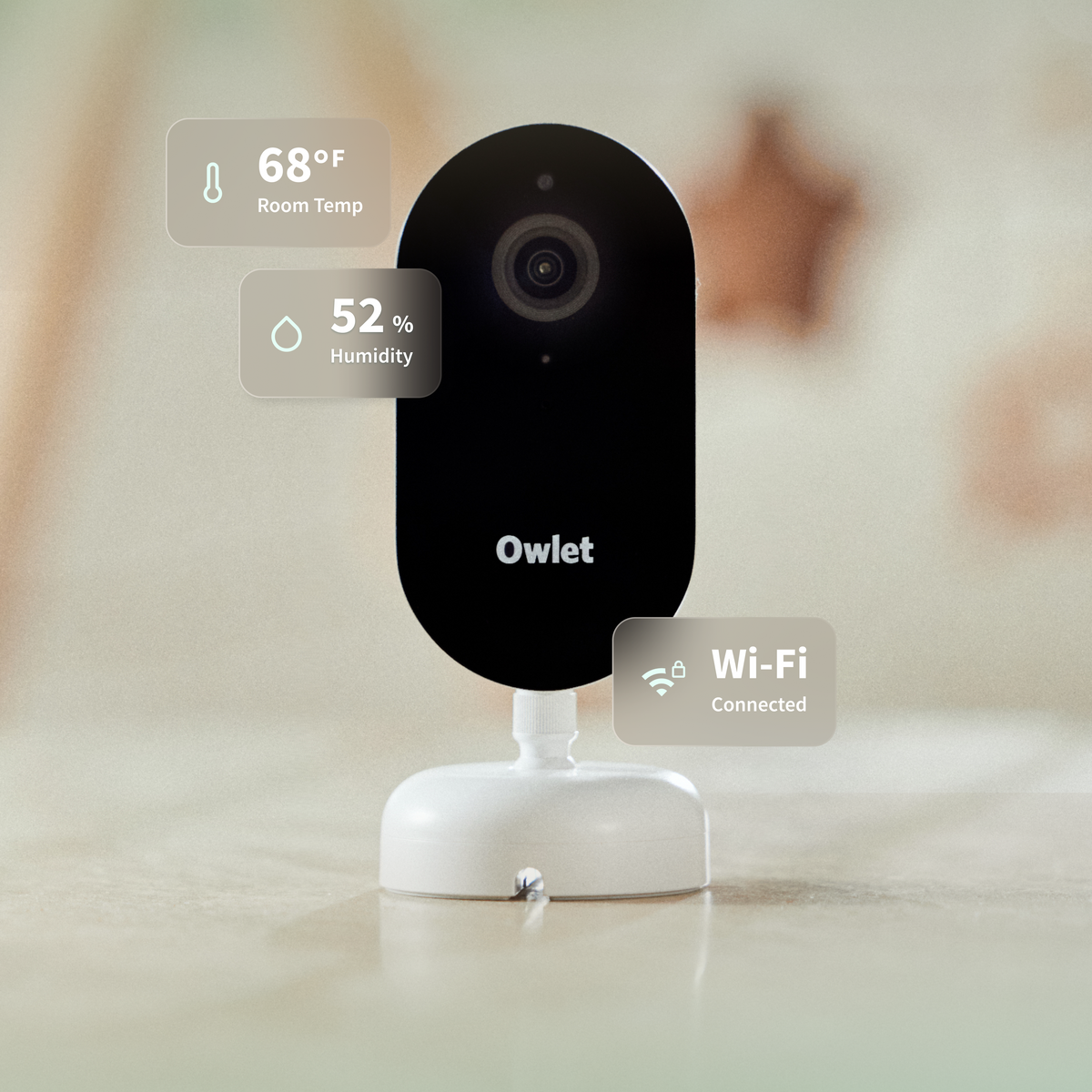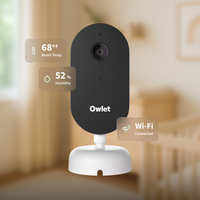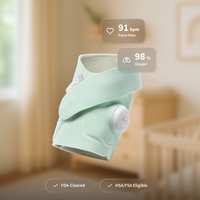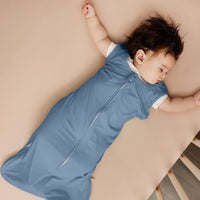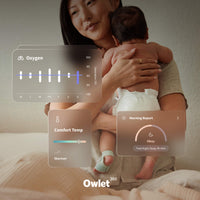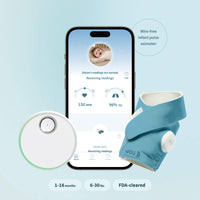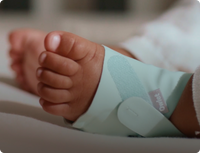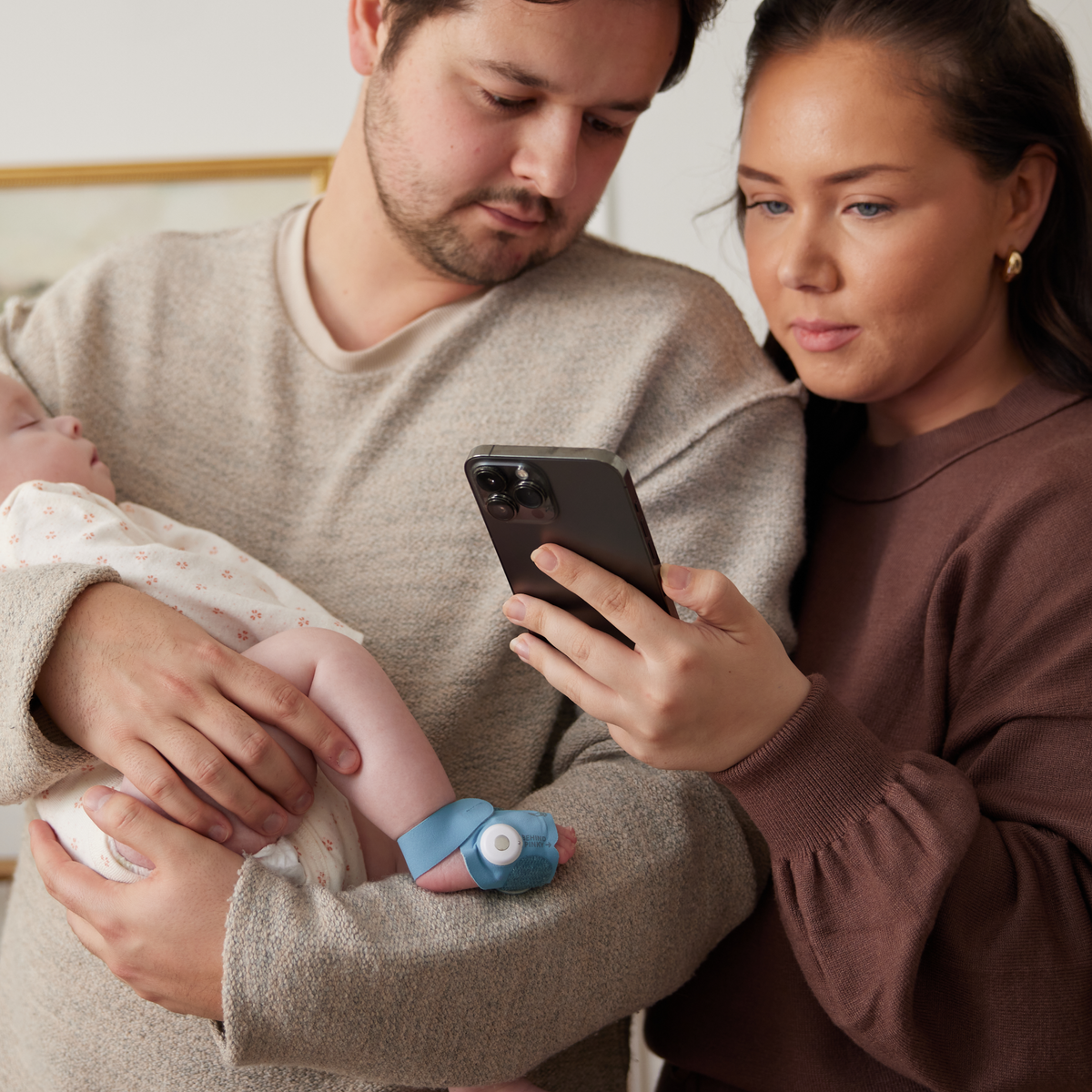As we head into the cold and flu season, we know parents have a lot to be concerned about when it comes to baby’s health. We are committed to shining a light on parent stories and want to share a unique one from an Owlet employee, nurse and mom. In her own words, here is Erika Hastings’ story.
By: Erika Hastings
A few years ago, our family of four became five as we welcomed our third baby, Mia, into the world. We were deep in that beautiful but sleep-deprived haze, adjusting to life with three children. Any moms with fall babies can relate to the special challenge of keeping a newborn healthy through the dreaded sick season. With two older children bringing home the germs of the outside world, it felt like we were fighting a losing battle against the inevitable.
We were doing everything we could—lots of handwashing, sanitizing, and trying our best to keep germs at bay. But unfortunately, one day our older son came home from school with a cold. Though his symptoms were minor, I felt a pang of worry as we did our best to keep him away from Mia. But soon after, our tiny girl started showing signs of illness too.
Mia was only 5 weeks old at the time and I was filled with anxiety knowing that RSV was going around our community. Because our oldest just had minor cold symptoms we didn’t take him to the doctor, but I was watching very closely for any developing signs and symptoms in our baby. We took her to the pediatrician within the first day or two, but at that point her symptoms were mild and the doctor sent us home with instructions to keep monitoring her and come back if the symptoms worsened. I watched her constantly and was so grateful to have my Owlet smart baby monitor during those stressful days to monitor Mia while we all tried to get some rest. We didn’t see any huge changes in her oxygen and pulse rate over the next day but because her symptoms were progressing we decided to take her back to the pediatrician. She tested positive for RSV and at that point her oxygen was starting to slightly decrease and she was showing signs of having difficulty breathing so they advised us to go to the emergency room at the nearby children’s hospital. We took her to the emergency room where she was observed for several hours and ultimately admitted.
We spent one night in the hospital in an overflow unit because the hospital was experiencing record breaking numbers of RSV admissions and did not have rooms for all of the sick babies. After 24 hours, we were sent home with oxygen and a prescription to the suction clinic. Unfortunately Mia’s symptoms started to progress throughout that day. The readings from my Owlet monitor and my nursing background allowed us to realize that her condition was quickly worsening despite the supplemental oxygen. We took her to the suction clinic as recommended by our doctor, where she was sent to the ER and ultimately admitted to a different hospital because the children’s hospital did not have any rooms. We spent two nights at this hospital on high-flow oxygen as Mia’s symptoms continued to worsen and the secretions in her lungs thickened. The fact that she was only 5 weeks old and likely still had some of the worst days of RSV infection ahead of her was very worrisome to the doctors. This hospital was smaller and did not have the necessary resources if additional respiratory support was needed. They talked with us about the possibility of needing to life flight her back to the children’s hospital, but her condition was stable enough to be sent via ambulance back to the children’s hospital that we had been discharged from a few days prior.
We spent several days at that hospital as she got through the worst of the illness. The peak of RSV typically lasts a few days, but because she was so little she was not recovering as quickly as an older baby or toddler would, so we spent some additional days in the hospital receiving suction and oxygen support. Those days in the hospital where I was still freshly postpartum and recovering, worried about my sick baby and my other two kids at home, are still some of the most challenging and emotional days I have had as a mom. We were discharged the day before Thanksgiving, again on oxygen, but hopeful that the worst days were behind us.
We followed up with the pediatrician a few days later and the doctor felt she had improved enough to discontinue oxygen. After everything that Mia had been through and the constant monitoring at the hospital, I can confidently say that I would not have been able to get any sleep at all if it hadn’t been for the Owlet monitor. Through monitoring with the Owlet device, we were able to identify that while not dangerously low, Mia’s oxygen levels were still lower than they should have been after we discontinued oxygen. We took that information to the pediatrician who decided it was best for Mia to be back on a very small amount of oxygen until her lungs had a chance to recover.
After a few more days we were able to discontinue oxygen for good, but I continued to experience anxiety and fear over the possibility of Mia getting sick again throughout the winter. Because her lungs had been through so much at such a young age, the doctors warned us that any type of respiratory illness she developed over the next year and even throughout her childhood would affect her more. The Owlet monitor continued to provide us with reassurance and calm at a time when we needed it most.
Mia is a healthy, happy toddler and I remain incredibly grateful for the information and peace of mind the Owlet monitor gave us. As an employee of Owlet, I have had a front row seat to the incredible mission, technology, quality and innovation and feel honored to play a small part in something so important. As a nurse, I appreciate the Owlet device as a tool to support my own assessment and monitor my baby when I am not able to. And as a mom, I will forever be grateful to Owlet for the peace of mind their product has given and the knowledge it empowered me with to be able to advocate appropriately for my baby.
Author Bio:
Erika Hastings is a Registered Nurse and Assistant Clinical Field Assurance Specialist at Owlet. She lives in Tennessee with her husband and three kids and loves working with parents at Owlet to provide helpful education and resources.
The quotes, stories, and experiences included here are those of the individuals and are not representative of Owlet's views or claims about our product. Individuals were not paid and did not submit their information as part of any paid promotion by Owlet.
The content provided on this health blog is intended for informational and educational purposes only. It is not a substitute for professional medical advice, diagnosis, or treatment. Always seek the advice of a qualified healthcare provider with any questions you may have and to learn more about your child's specific needs.
Dream Sock® is intended to track baby's' pulse rate and oxygen level and keep parents informed. BabySat™ is a prescription-only device. Dream Sock and BabySat are not intended to diagnose, treat or cure any disease or other condition, including but not limited to, Sudden Infant Death Syndrome (SIDS) and/or Respiratory Syncytial Virus (RSV). Medical decisions should never be made solely using Dream Duo and Dream Sock data. BabySat (prescription-only), Dream Duo and Dream Sock should not substitute for the care and oversight of an adult or consultation with medical professionals.
